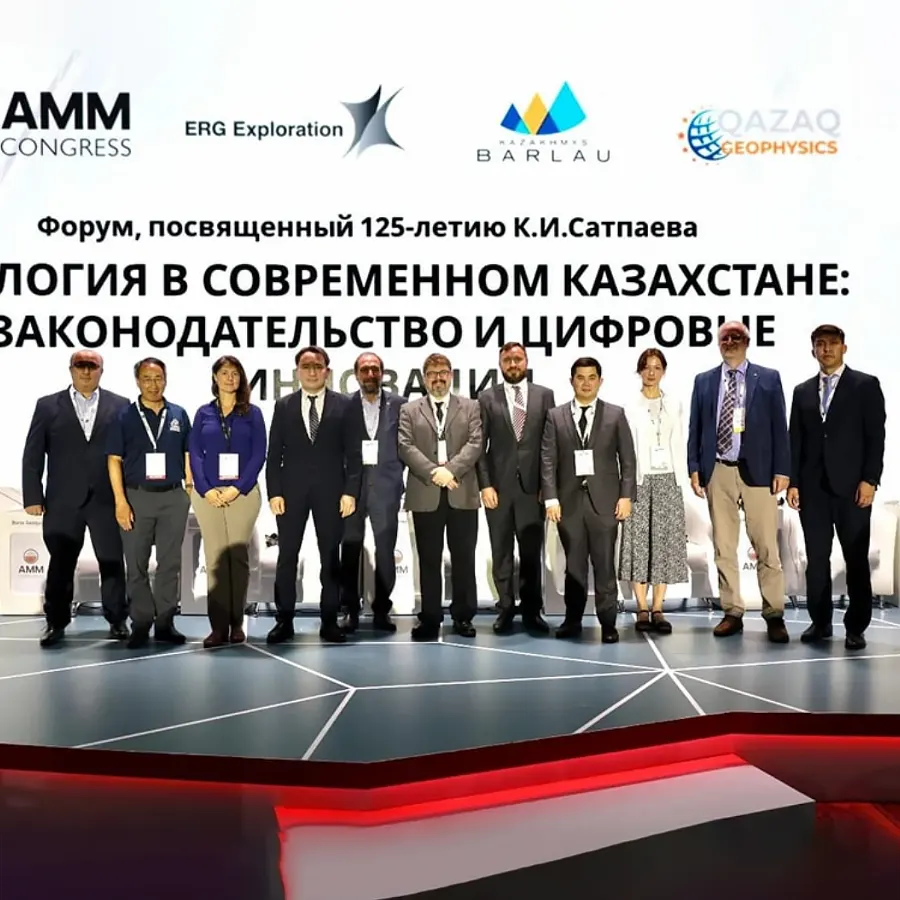
The event, held within the framework of the 14th International Mining and Metallurgical Congress and the Astana Mining & Metallurgy exhibition, which brought together the world’s leading experts in the geological industry to discuss current issues and prospects for its development.
The session was divided into two parts. The first part discussed the current challenges and prospects of subsurface use in Kazakhstan. The second part attention was paid to innovative solutions in geology and the role of digital technologies.
Opening the session, the moderator of the event and the rector of Satbayev University Meiram Begentayev stressed that we are on the verge of significant changes that require new approaches to subsurface use and the introduction of digital technologies in geology.
The Vice Minister of Ecology and Mineral Resources of the Republic of Kazakhstan Zhomart Aliyev raised important issues of geology in modern Kazakhstan and stressed on the types of environmental risks which are caused by drilling solid minerals, stages they are divided, as well as what changes are expected within the framework of the Water Code project and possible risks for the mining industry.
The Chairman of the Committee of Geology of the Ministry of Construction and Industry of the Republic of Kazakhstan Yerlan Akbarov gave a speech about the state of the geological industry in Kazakhstan and changes in the Subsoil Code concerning the inclusion of mineral resources and reserves in the state accounting.
Saudi Arabia’s mineral reserves are estimated at
$2.5 trillion. This was stated by Abdullah Al-Shamrani, Chairman of the Geological Survey of Saudi Arabia and shared his country’s experience in improving the investment attractiveness of the mining sector through geological exploration programs.
Yerlan Galiyev, Chairman of the National Geological Survey, noted the importance of digital technologies in the modernisation of the geological industry, pointing out that the primary digitisation of geological materials will be completed in 2027.
Garth Kirkham, Chairman of CRIRSCO, gave recommendations and best practices for the presentation of geological information, emphasizing that the implementation of international standards in subsurface use help to attract investments and develop the industry.
The issue of promoting the national code of reporting on
KAZRC mineral resources and ore reserves in Kazakhstan was raised by Georgy Freiman, Chairman of the Executive Committee of PONEN.
Nicola Smith, Head of Project Implementation at the British Geological Survey, spoke about the need to create a favourable climate to attract investment. The organisers of the strategic session were Kazakhmys Barlau, Qazaq Geophysics and ERG Exploration.
At the second part of the strategic session dedicated to the 125th anniversary of K.I. Satbayev and organised by Kazakhmys Barlau and Qazaq Geophysics, discussed innovative solutions in geology, the role of digital technologies and their practical application in modern Kazakhstan.
The event brought together the world’s leading companies and experts who presented their products and modern technologies in geology. The session participants focused on innovative solutions and digital technologies, discussing their impact on improving efficiency of geological exploration. For example, Niall Tomlinson from SRK Exploration Limited spoke about generative exploration research, and Brenton Armitage, CEO of Epiroc Kinetic Logging Services, focused on solutions for ore bodies. The speakers presented the latest achievements and prospects in the field of geology, including the use of the latest technologies In geoinformation analysis, computer vision, spectral analytics and artificial intelligence.
The CEO of Qazaq Geophysics Bekassyl Aukeshev shared his experience and talked about innovative solutions in aerogeophysical survey, as well as the application of new generation electromagnetic technologies in Kazakhstan. The participants actively discussed the creation of digital databases, satellite data analysis, field forecasting, as well as the role of universities in the development and implementation of digital innovations in geological practices.
Professor Yaoguo Li of the Colorado School of Mines spoke about the integration of artificial intelligence data for mineral exploration and energy transition. He stressed that we often forget about human intelligence when discussing artificial intelligence and the importance of training employees and improving their competence.
Anna Nesmeyanova, Head of the Department of Geochemical Methods at the All-Russian Institute of Mineral Resources, she spoke about the use of portable IR spectrometry techniques in the early stages of geological exploration.
The Director of the Center for the Study of Minerals of Russia and Central Eurasia Reymar Seltman presented a digital geological map of Kazakhstan and the CERCAMS geodata database, which helps to evaluate minerals and determine targets.
Representatives of Terra Exploration, ERG Exploration, ALS Goldspot Discoveries, Aerogeophysics, Mount Sopris Instrument Company as well as the Director for the Northern and Central Region Bureau Veritas Askar Amanbay and Stefan D. Butt, the Chairman of the Master‘s Degree in Safety and Risk Management at Memorial University of Newfoundland spoke at the session. Summarising the session, the moderator expressed gratitude to all participants for their active participation and stressed the importance of the steps taken in the modernisation and digitalisation of the geological industry of Kazakhstan.
